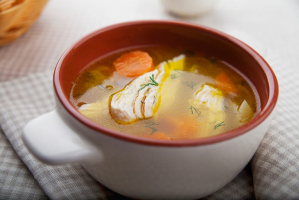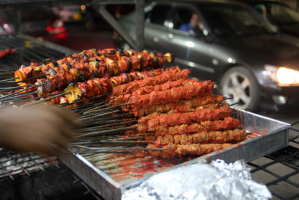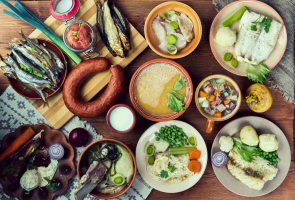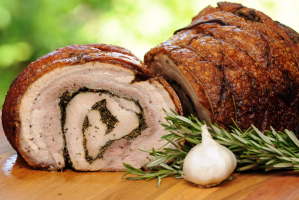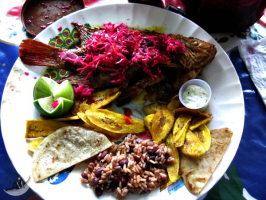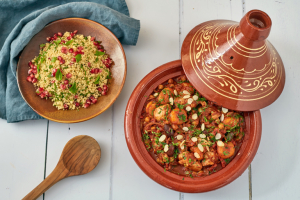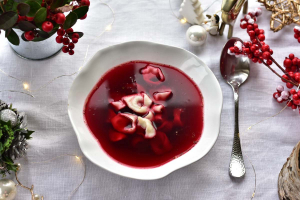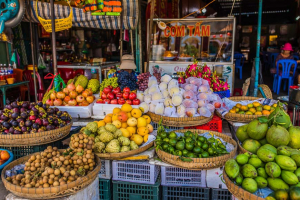Top 10 Best Foods to Try in Senegal
Today’s article would cover some of the famous foods in Senegal. Though most of them contain the same ingredients (such as rice, fish and veggie), these dishes ... read more...still manage to exude distinctive flavors that set them apart from each other. Let’s dive into it right now!
-
Thiéboudiene is Senegal's national dish. It is 100% a Senegalese cultural heritage. Some neighboring nations even refer to it as djolof rice - after one of Senegal's old kingdoms.
Thiéboudiene is created with rice - which is cooked in marinara sauce - as well as nokos, a blend of dried herbs that include parsley and plenty of garlic. The rice is eaten with fish and a variety of plants that have been simmered in the marinara sauce. However, caution is advised; this meal cannot contain any vegetables. The recipe consists of just carrots, celery, tapioca, eggplant, okra, and turnip. In some rarer occasions, this famous dish is served with an onion sauce (known as diaga) which comprises chopped vegetables, shrimp dumplings, and a spoonful of tomato paste.
Thiéboudiene, like many other Senegalese foods, is presented on a huge platter with the entire family sitting around it, spoons in hand, ready to taste this delectable delicacy.
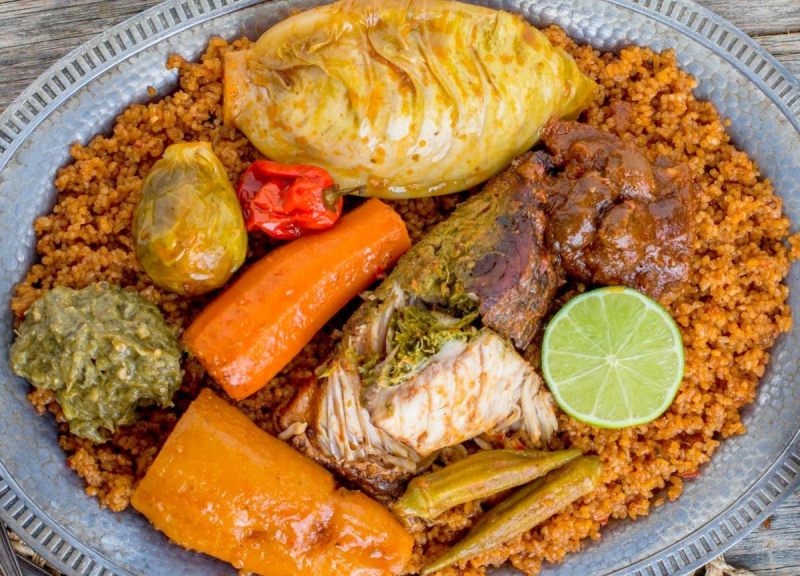
Source: World Food Guide 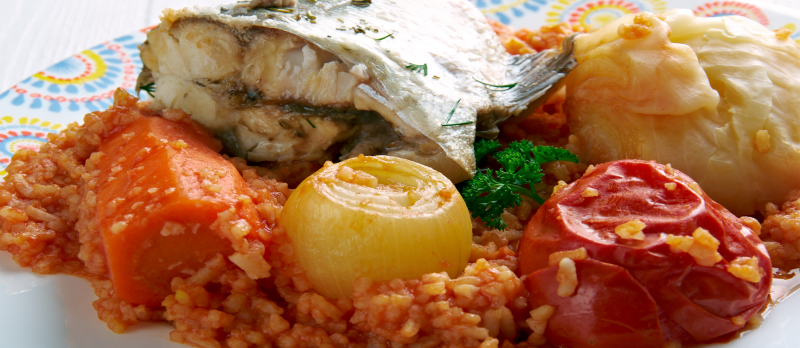
Source: TasteAtlas -
Yes, you heard it right: this Senegalese dish is named in French. For those of you who are fluent in French, its meaning must be instantly recognizable to you. To be more precise, "c'est bien" literally translates as "that's good." As a former French territory, Senegal's influence can be seen in the titles of their cuisine, and Thiebou Diola is an outstanding example.
The recipe, however, is far from French in composition. The Diolas, which is a tribal group based in the southern Senegal province of Ziguinchor, invented the dish. Thiebou Diola is made with white rice and dried shrimp, as well as clams and mussels. Its famous Moyo sauce is actually a mixture of tomato sauce, yellow, green and red sweet peppers, along with chili. The whole combination is neatly chopped and flavored with vinegar, pepper, salt, and mustard. In the final steps, you should add crushed okra seasoned with salt and black peppers.
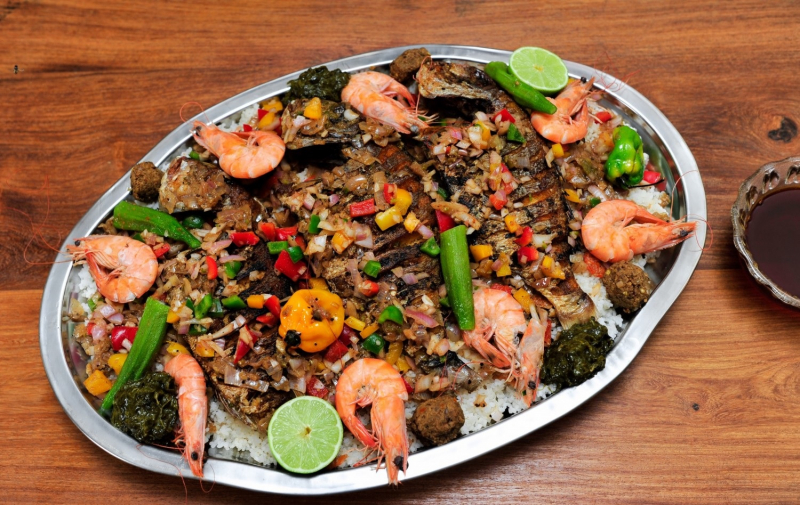
Source: Download million images for free 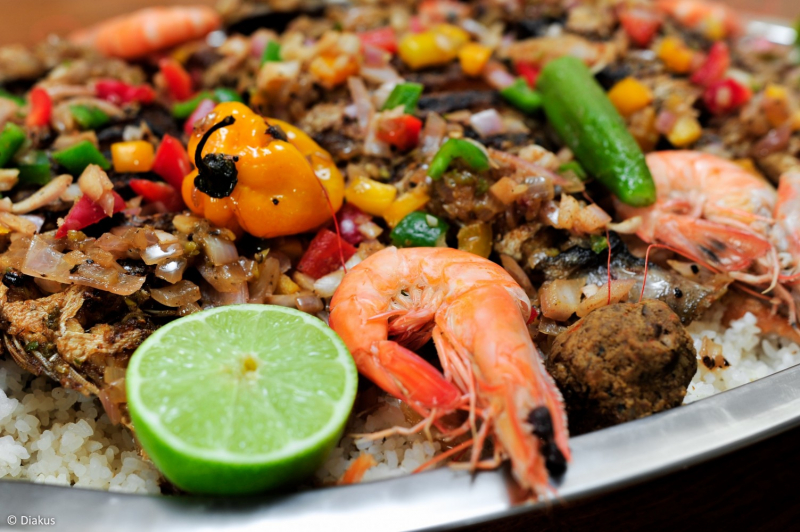
Source: Senecuisine -
To be frank, we can say that Soupe Kandia (alternative spelling: soupou kandja) is not really soup in the traditional sense. Rather, it is a thick sauce eaten over rice. Due to the okra, it has a very unique slimy feel, and people seem to have mixed reactions to the dish. There are some who absolutely despise the cooked-down okra, while others seem pretty okay with it.
So what is in Soupe Kandia, exactly? Fish and/or shellfish, vegetables, (sometimes meat), chiles, African staple, and palm oil, are all included. Once you get beyond the strange texture, it tastes rather lovely. The Soupe Kandia is served hot and viscous here, spooned over rice in all of its glory. Surprise: Its taste is excellent!
While the okra-seed stickiness takes some time to get used to for some eaters, the pink fish, little mussels, and chiles that flavor the dish are impossible to resist. In addition, the quantity of palm oil utilized was nicely balanced and not excessive at all.
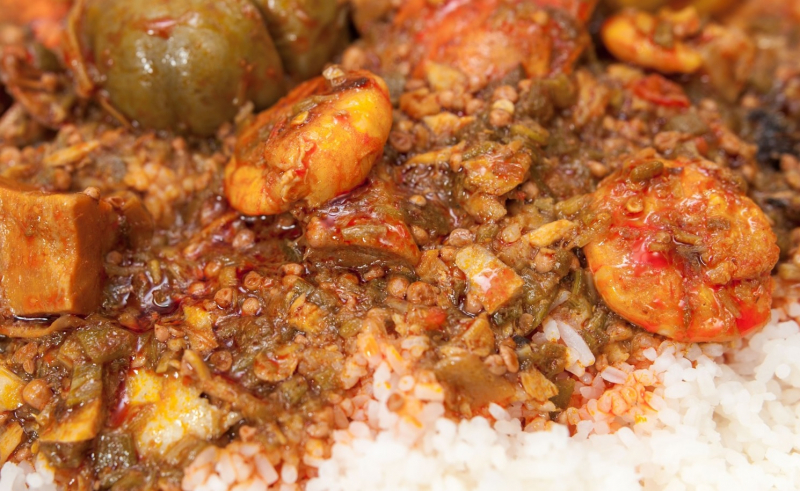
Source: Senecuisine 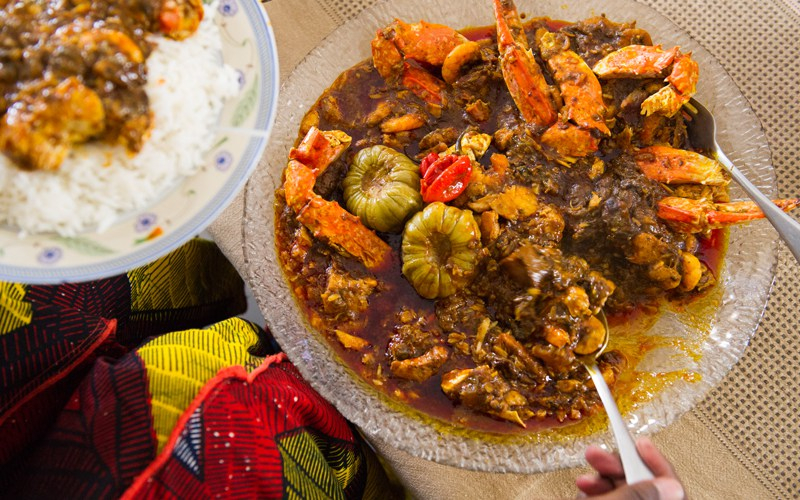
Source: Les saveurs de Bintou -
For those who do not understand the meaning of the name, here is a brief explanation: in Wolof (the most widely spoken language), the terms ‘guinar’ and ‘dieun’ refer to chicken and fish, respectively.
Yassa Guinar is possibly the most straightforward meal to prepare. It is rice-based, and accompanied with an onion sauce made with nokos (as you can see, nokos is rather popular), mustard, and plenty of lemons. On most occasions, Yassa Guinar is also deliciously served with stewed or roasted fish (or fowl), which has been stuffed with nokos. That is basically the common formula, but you do not have to strictly follow it. This food may be prepared in a variety of ways to suit both the chef’s strong points and the preferences of the customers being served.
Due to its simple recipe and open access of ingredients, Yassa Guinar is quite popular among expatriate Senegalese. You can never go astray with a well-marinated and seasoned chicken, served with a mouthwatering onion sauce that will have you fantasize for days.
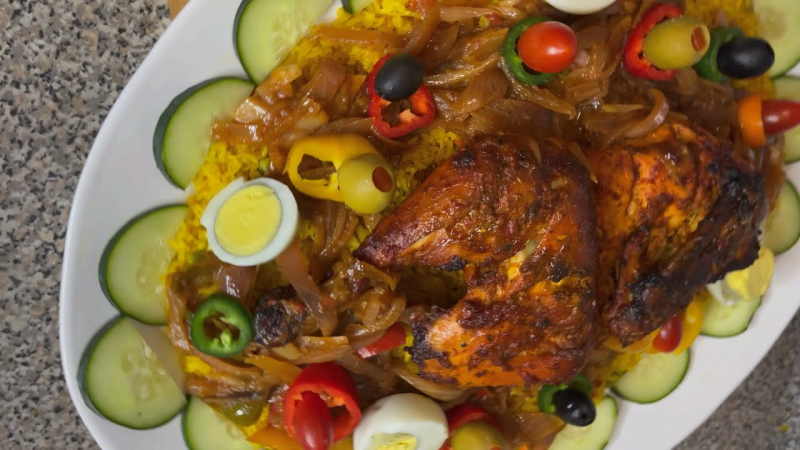
Source: Youtube, Senwagn Seni feem 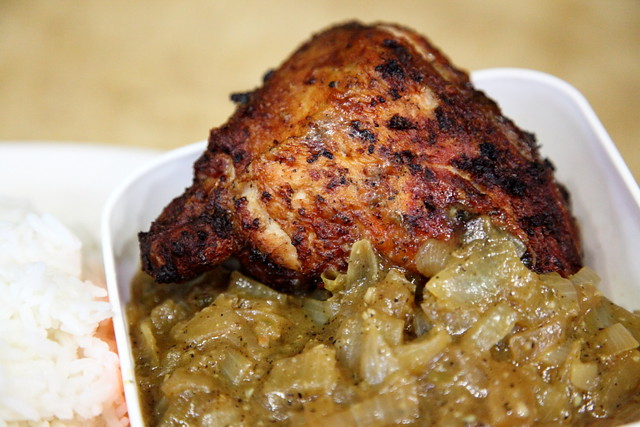
Source: Flickr -
Mafe (sometimes written as maafe), is a Senegalese meal made with meat in a peanut or groundnut butter sauce. The dish is often served over rice or wheat.
According to some sources, Mafe first arrived in Mali, before expanding across Africa during the colonial era - notably in Senegal and Gambia - where farmers attempted to enhance groundnut production. Certain recipe variants resemble stews, which include some components such as tomatoes, onions, ginger, celery, peppers, and spices. Other varieties comprise a big piece of chicken along with some rich and thick bean pastes. While lamb and beef are the most often utilized proteins, fish and chicken are also used in some occasions.
One thing to note, though. The origins of Mafe is actually debatable. We know we have just said that it first arrived in Mali. But in truth, there is some controversy about whether it originated in Senegal or Mali, as both countries claim that this dish belongs to them. So, to make things simple, let's just refer to it as a Senegalo-Malian supper. This issue might not be that important, after all, because in the end, Mafe is found in almost all West African nations, not just Senegal.
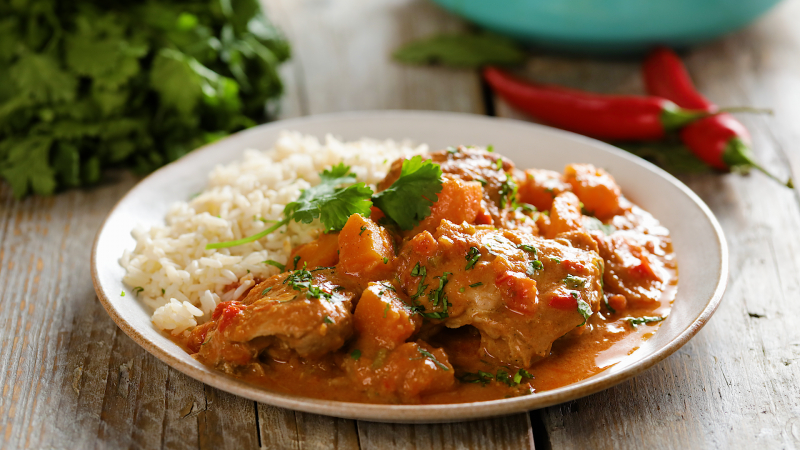
Source: Tastemade UK 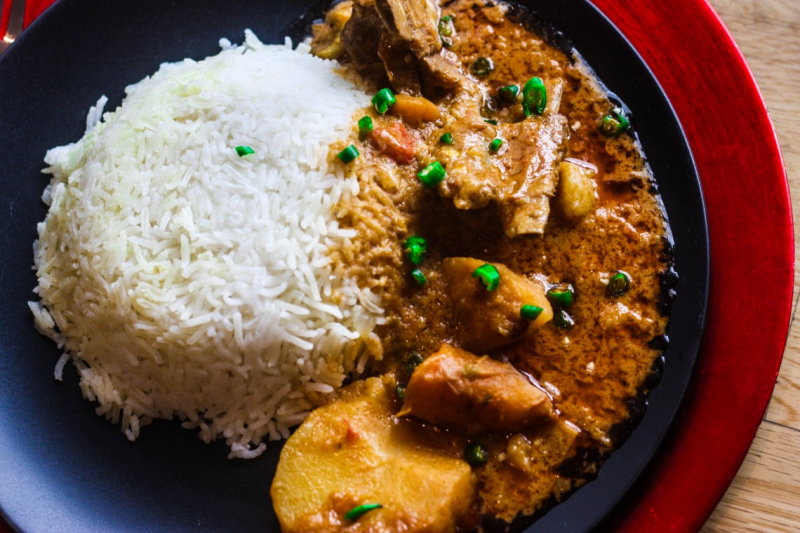
Source: MyWeku Tastes -
Thiebou Yapp is a filling Senegalese stew, composed of grains, meat, and vegetables. It is often made with steaming broken rice, which is put in a meaty broth with browned pieces of lamb or beef. Then, the dish will be boiled until thoroughly cooked.
Fresh parsley, oil, vinegar, paprika, tomatoes, carrots, mustard, habanero peppers, eggplants, cabbage, bell peppers, garlic, and onions are all common components. This stew is a beef-based version of the Senegalese national dish thiéboudiene. The meal is often served with rice on the bottom and meat and vegetable bits on top. Olives and hard-boiled yolks are often placed in the dish as well.
Yes, you heard it right: Thiebou Yapp is almost identical to thiéboudieune, except that the former is made with beef, and the latter does not not contain veggies. To be more precise, in your preparation for a Thiebou Yapp dish, braised beef should be added to water along with meat stock and nokos. Then, the rice will go in when the water begins to boil. Once everything is cooked to perfection, it will be presented to the whole family.
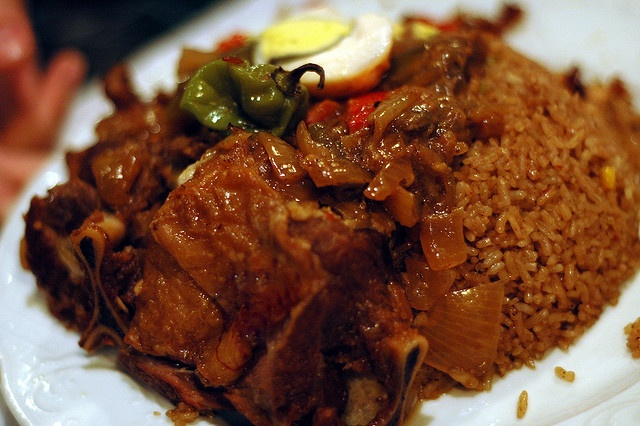
Source: Pinterest 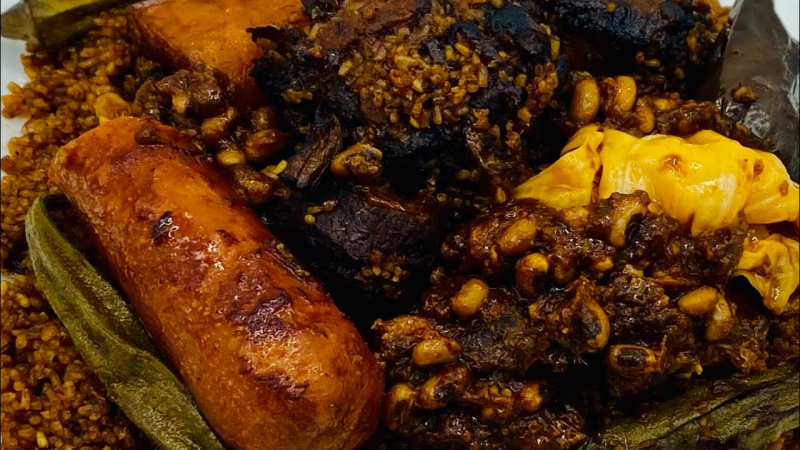
Source: Youtube, Saveurs Planétaires -
Domoda is a mildly spicy peanut butter-based dish, and it is an enduring presence in the history of Senegambian cuisine. It is often eaten with chicken, pork, or fish. This dish may also be prepared with beef, veal, or lamb.
After the sauce has been cooked, Domoda is thickened using a wheat and water mixture. Along with the peanut - which contributes to the main flavor - chopped tomatoes, and spices such as Chili cubes and chili powder are also added to spice up the original recipe. Bear in mind that the meal is quite heavy in calories, though. Hence, it might be difficult to digest for some people due to the high lipid proportions in the butter.
Still, together with Yassa, Domana is among the most well-known dishes out of all the traditional cuisines from Gambian and Senegalese areas. Domoda is, for some reason, more favored among females than with males. And no one understands why.
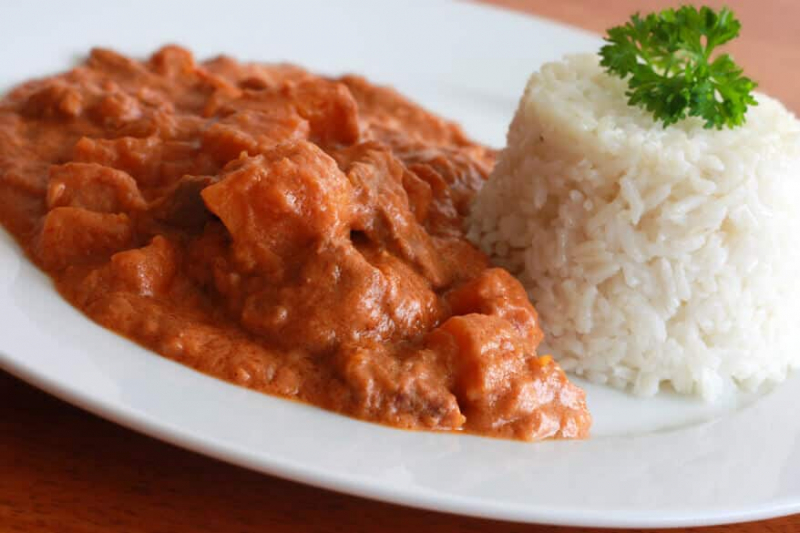
Source: The Daring Gourmet 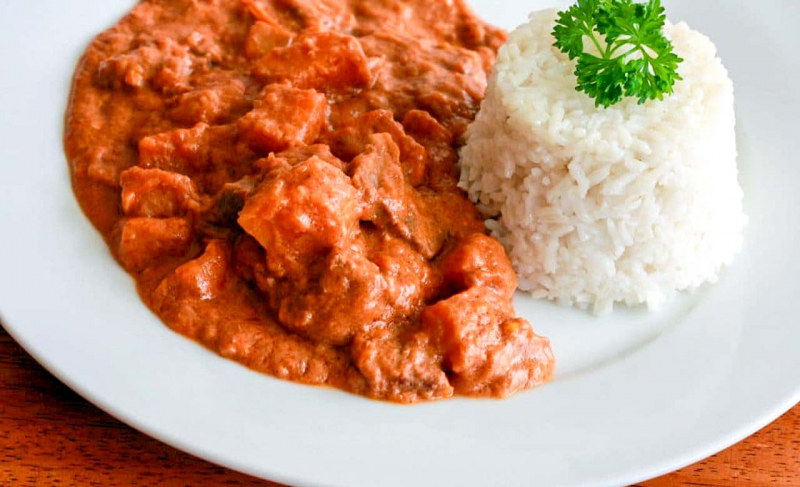
Source: Discover Senegal -
The term “Dibi” means BBQ in Wolof. Dibi is a Senegalese meal made with grilled meat (often lambs). The meat has been marinated and sliced into little pieces. Furthermore, Dibi is often accompanied with bread, mustard, and fried onions. One thing to take note: Dibi should not be confused with the Senegalese name for suya, "dibi Hausa." Both dibi suya and dibi are grilled or cooked over a wood-burning stove. However, Dibi is not cut as thinly as suya, nor is it marinated with kankankan spice.
You can order a whole lamb from many restaurants, and it is widely consumed throughout the country. Méchoui (the term used to describe the process of cooking a whole lamb) is a Maghrebi cuisine style, often employed in Dibi preparation. In a typical Senegalese meal, Dibi is often eaten with lettuce salad, tomato, French fries, and fried plantain.
Restaurants that offer Dibi are called “Dibiteries”. In Senegal, you can easily find Dibi in most street shops. Numerous sellers in Dakar (a main city in Senegal) are actually foreigners - notably from Nigeria's Hausa ethnic group.
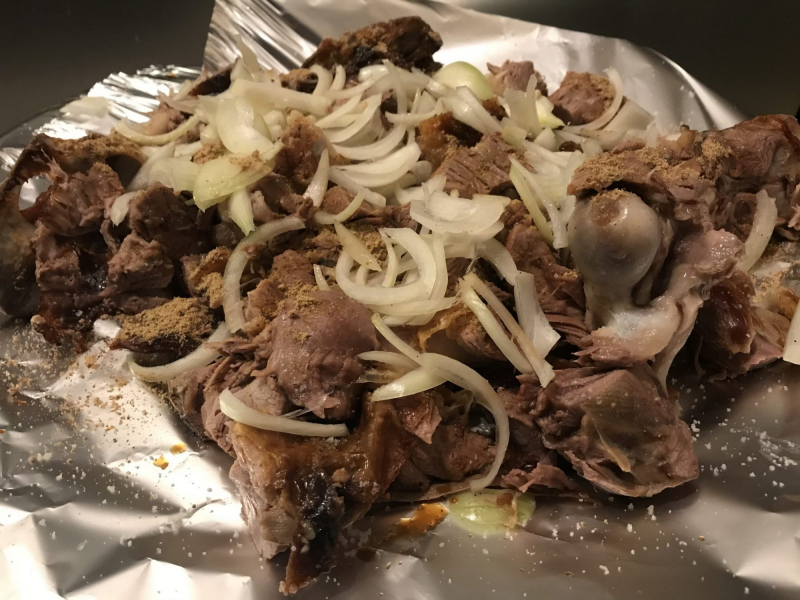
Source: Royacshop 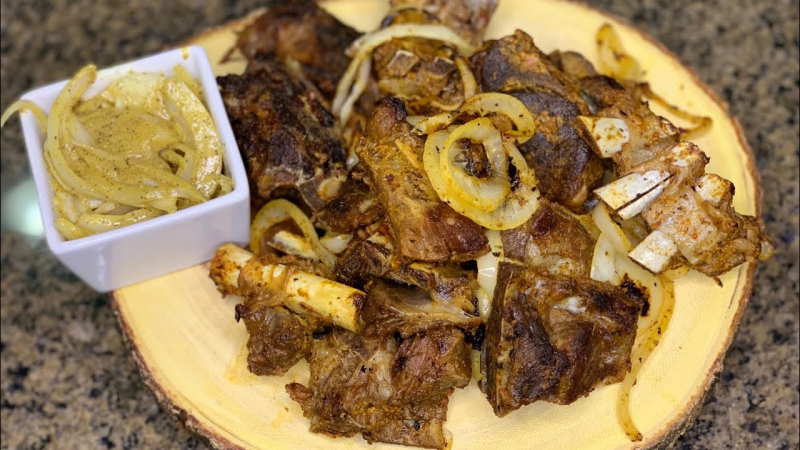
Source: Youtube, The Kalajula's -
Senegal is well-known for its delicious cuisine, and this Senegalese stews Caldou recipe is no exception. The meal is cooked with seafood and other local spices to improve its flavor and authentic African taste. Unlike any other fish stew available, we can say that Caldou is quite unique. When the stew is properly seasoned, it offers your palate a sense of renewal - a fresh flavor as if you were eating it for the first time. It is such an enticing feeling.
And that is not all. Caldou is also very nutritious and good for your health. It is packed with Omega 3 fatty acids and traditional herbs, which will keep your body well nourished for hours thereafter.
There is a restricted and small handful of veggies available in Senegal at a reasonable price for natives. As a result, the majority of Senegalese food recipes have the same type of vegetables, and practically all of them include rice and fish. Caldou is, of course, no exception. Nevertheless, you could simply prepare this dish either with any type of meat or with none at all. Also, it is possible to pick any vegetables of your own choice!
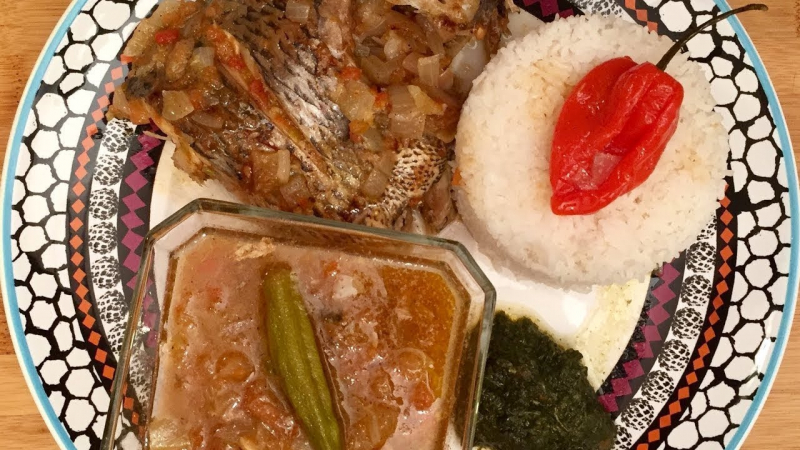
Source: Youtube, Jolof Cooking 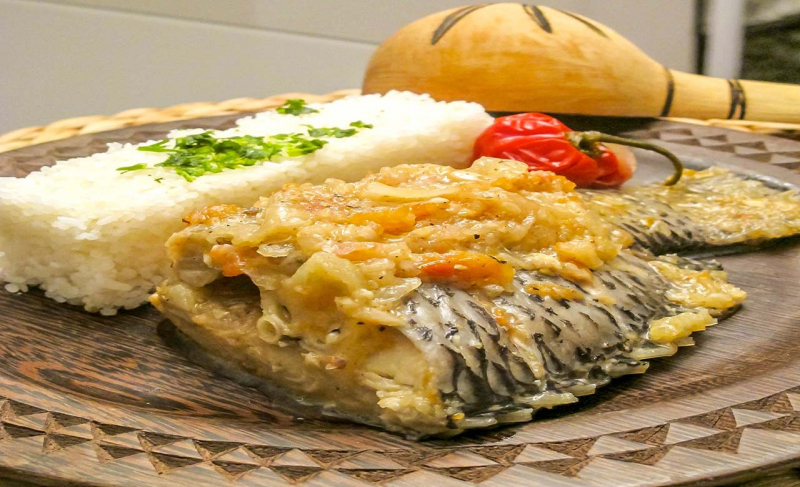
Source: Discover Senegal -
In Senegal, fried fish is referred to as Firire - a derivation of a French Frire (meaning "to fry"). If you do not want to bother with the fish bones, you could use fish fillets instead. However, most locals in Senegal prefer eating with their fingers. During the meal, they would grasp the heads or tails of the salmon to better retrieve the hidden crispy morsels of flesh.
In most types of meals and occasions, this famous Firire dish is served with an onion sauce. (some people prefer fries, salad, and toast). The meal is created with many ingredients, including salmon, oil, salt, chili powder, green pepper, pepper, cherry tomatoes, salad, mustard ,vinegar, garlic, and onions. Senegalese people like to eat Firire for dinners rather than breakfasts and lunches.
There are some small tips to make a Firire dish look visually appealing. First, arrange salad greens that have been marinated in a dish. Next, you should make a hole in the middle and place the fish there. Combine the cherry tomatoes with the basil, before covering them with some cucumber slices. Last but not least, mix the sauce and the plantains together.
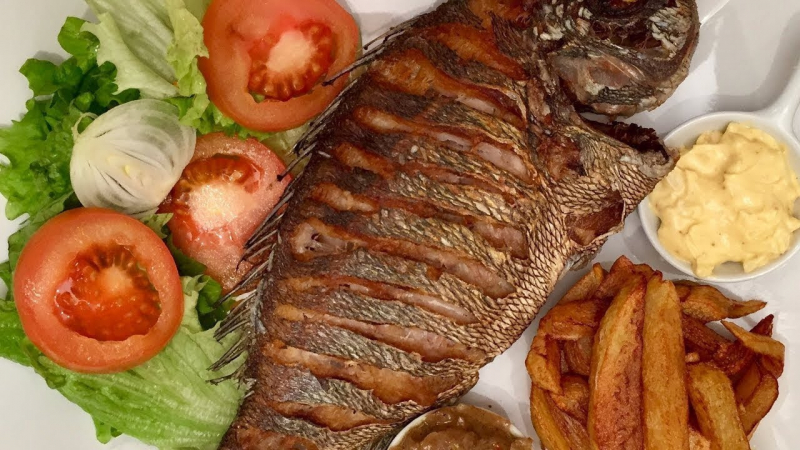
Source: Youtube, Jolof cooking 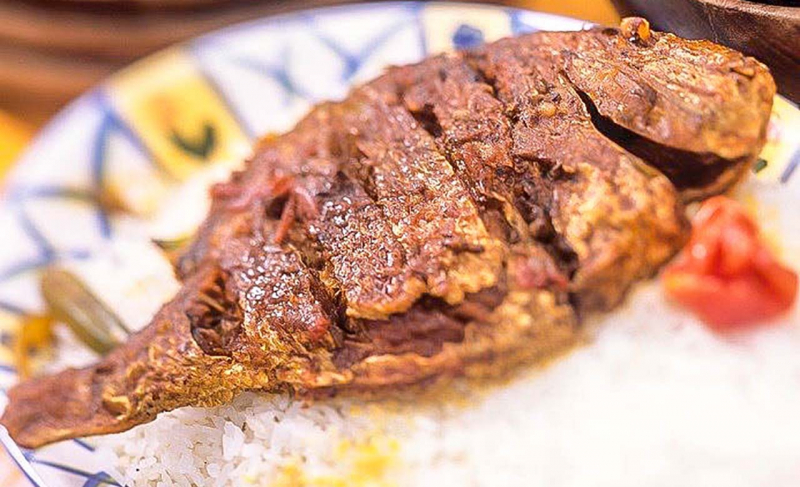
Source: Discover Senegal












